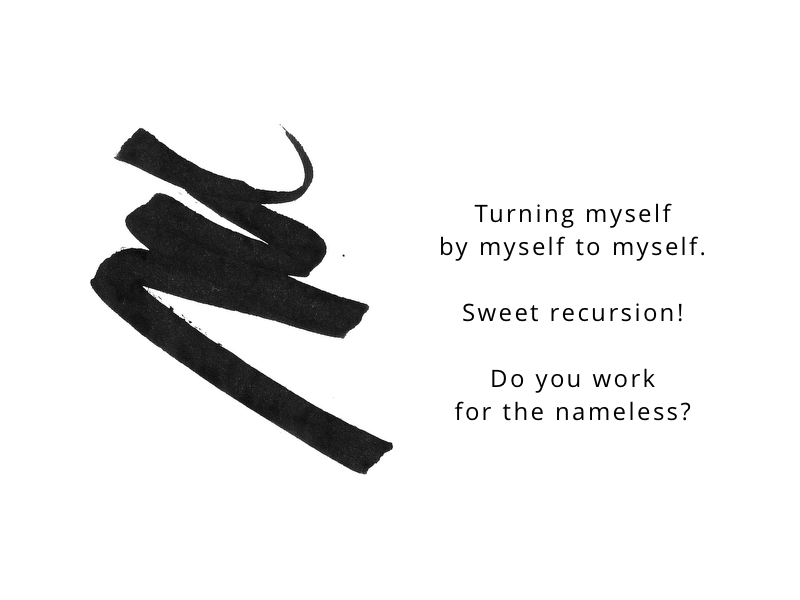
object YCombinator {
def apply[A, B](f: (A => B) => (A => B)): A => B = f(apply(f))(_)
}

object Factorial {
def apply(n: Int): Int = if (n > 1) n * apply(n - 1) else 1
}
val a = Factorial(5) // is 120
object FactorialTailrec {
def apply(n: Int): Int = {
@tailrec def fac(i: Int, k: Int): Int = if (i > 1) fac(i - 1, k * (i - 1)) else k
fac(n, n)
}
}
val b = FactorialTailrec(5)
object FactorialIter {
def apply(n: Int): Int = {
var k = n
var i = n - 1
while (i > 1) {
k = k * i
i = i - 1
}
k
}
}
val c = FactorialIter(5)
object YCombinator {
def apply[A, B](f: (A => B) => (A => B)): A => B = f(apply(f))(_)
}
val d = YCombinator[Int, Int](a => b => if (b > 1) b * a(b - 1) else 1)(5) // immediately applying 5! = 120
object Overflominator {
def apply[A, B](f: (A => B) => (A => B)): A => B = f(apply(f))
}
object ExplicitYCombinator {
def apply[A, B](f: (A => B) => (A => B)): A => B = a => f(apply(f))(a) // instead of (_)
}